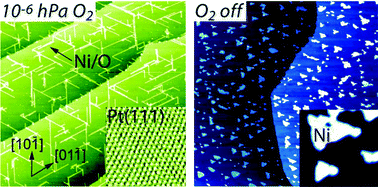Pressure-dependent Ni–O phase transitions and Ni oxide formation on Pt(111): An in situSTM study at elevated temperatures
Abstract
Growth, atomic structure and O2 partial pressure dependent phase transitions of Ni–O structures and thin NiO films on Pt(111) have been studied using


 Please wait while we load your content...
Please wait while we load your content...